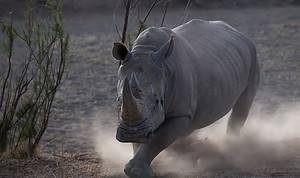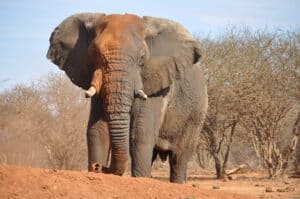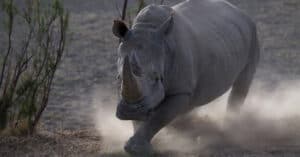Mama to the rescue! This young rhino is curious about what a lion is eating but does not get a great reception. Then the baby rhino quickly backs off, that is until Mama rhino turns up and shows the lion who is boss around here. Even a lion thinks twice about taking on a fully-grown rhino!
Click to Watch the Video Below!
Rhinoceros Defense and Attack
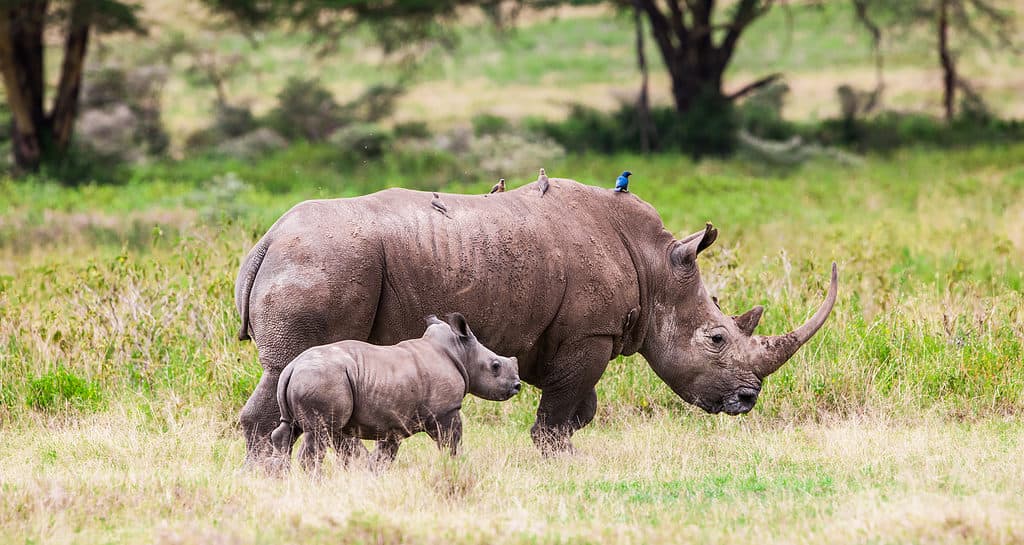
Lions are more likely to target a rhino calf than an adult
©Travel Stock/Shutterstock.com
The rhinoceros is a unique and fascinating animal. They live in Africa and Asia and there are five different species: the white rhinoceros, the black rhinoceros, the Indian rhinoceros, and the Javan and Sumatran rhinoceros.
This footage was filmed at the Shamwari private game reserve in the Eastern Cape of Africa. The lion has caught some prey and the younger rhino wants to take a look. While a lion would be willing to take on a younger rhino, they know better than to take on an adult. This is why you see the lion’s attitude changing dramatically when Mama turns up! All she has to do is lower her horn and walk toward the lion and that is enough.
Most rhinos live alone but white rhinos may live in groups. Mothers may group to raise their calves. The rhino method of attack is to charge at the enemy with their horn – their considerable body weight is enough to scare off most animals.
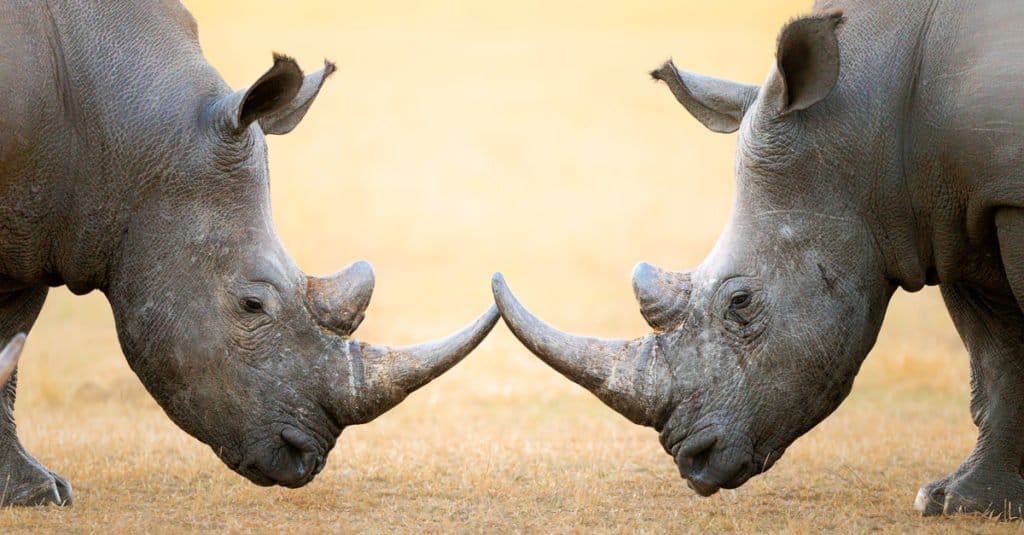
Rhino horns are made of a fibrous protein called keratin that is prized by human poachers.
©iStock.com/johan63
Rhino Horns are More Than Ornamental
Rhinos are hunted for their horns, contributing to their drastic reduction in numbers. However, the different rhino species have different types of horns. White rhinos have two horns – the one at the front is more prominent (over 35 inches) and the back one is smaller. Black rhinos also have two horns but the front one is not quite as large as in the white rhino. Some black rhinos have a third horn. Sumatran rhinos also have two horns and the front horn can be up to 31 inches.
Indian rhinos have one smaller horn (not usually much longer than 20 inches) as does the Javan rhino whose horn is more like 10 inches long but female Java rhinos may not even have horns.
Rhino horns are made up of a fibrous protein that is called keratin. The center consists of calcium and melanin layers. They are highly prized in some cultures and sadly change hands for large sums of money.
The photo featured at the top of this post is © JONATHAN PLEDGER/Shutterstock.com
Thank you for reading! Have some feedback for us? Contact the AZ Animals editorial team.



